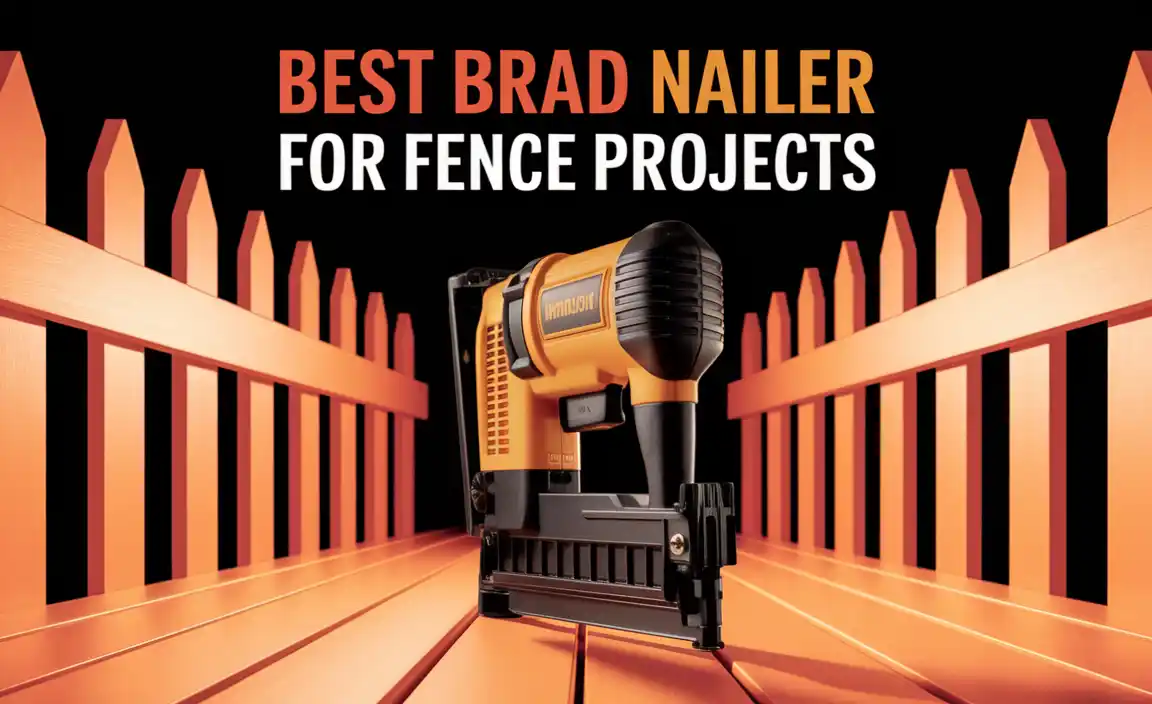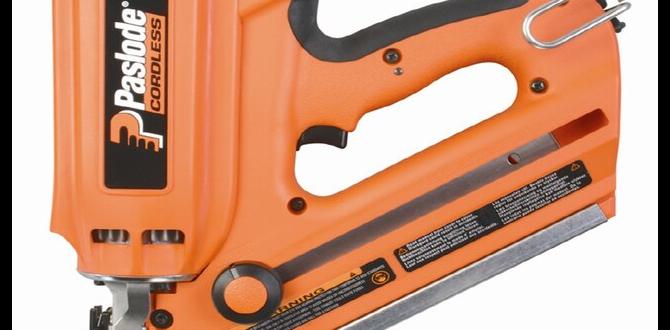A nail gun or nailer is designed to drive nails into different kinds of materials among which wood is the most common material where a nail gun is used to drive nails. With the invention of the nail gun, the construction of housing floor sheathing and sub-floors has been accelerated.
No doubt that the nail gun is a very important tool for construction work and a lot of work has been done onto it. So, with time and with the diversity of necessity different kinds of nail guns have been invented.
Yes, the basic use of a nail gun is to drive nails but when you will intend to buy one you should have a clear idea about its varieties so that you can understand which one is perfect for your work.
In this article, I will mention the use of a nail gun based on its main category.
Table of Contents
8 Common Types of Nailers and their Uses
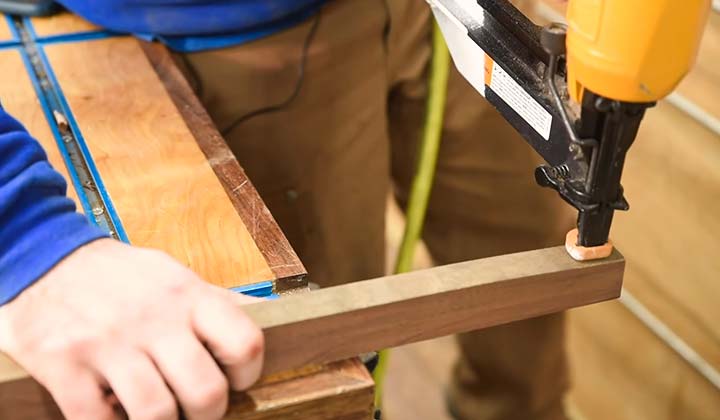
1. Framing Nailer
A framing nailer is a heavy-duty nailer perfect for large projects. For example, if you are working on heavy construction projects such as building a home, adding a room, deck, wood sheathing, fences, etc. you need a framing nailer.
Framing nailers are very powerful and an important advantage of a framing nailer is that it does not create any crack when you are driving nails through plasters.
There are two types of framing nailers. One is round head framing nailer and the other is clipped head framing nailer.
For high volume projects, a clipped headed nailer is more useful compared to the round-headed nailer as the clipped headed nailer can hold more nails. But certain building codes do not allow the usage of clipped headed nailers.
Round-headed nailers are easy to transport. So, if you need to take your nailer from one place to another round-headed nailer is a good choice for you.
2. Flooring Nailer
Flooring nails are used for installing floors. If you use a floor nailer to attach the sub-floor with the main floor you can do the work faster and maintain preciseness even working at a fast rate.
Though it is called flooring nails it does not use nails in a conventional sense. The nails a flooring nailer uses for flooring are called cleats. Cleats come in cartridges and you have insert cartridge in the flooring nailer, not a single cleat. So, in a sense, it functions as a staple gun.
There are two types of flooring nailers – one is a manual flooring nailer and the other is a pneumatic flooring nailer. The latter type requires less exertion from the user as it uses the air pressure to force the nail through the board whereas the manual nailer has a spring inside it which drives a nail into the floorboard when the user exerts force onto it.
3. Roofing Nailer
The name of the roofing nailer implies its purpose. You can use it to install a new roof or you can use it for re-roofing purposes. It is mostly used y the professional roofers, contractors, and the serious DIYers.
The roofing nailers are designed to drive nails through different kinds of roofing materials like wood, asphalt, and fiberglass shingles, waterproof tar paper, and insulation board.
Roofing nailers are available in 3 different varieties. For example, spring-loaded roofing nailers, pneumatic roofing nailers, and solenoid roofing nailers.
The working mechanism of spring-loaded roofing nailers is very simple. It uses springs to take nails out of the chamber.
Like all other pneumatic devices, the pneumatic roofing nailers use the power of air compressors. It is the most popular roofing nails among professionals. And lastly, the solenoid roofing nail – it uses electric power to work.
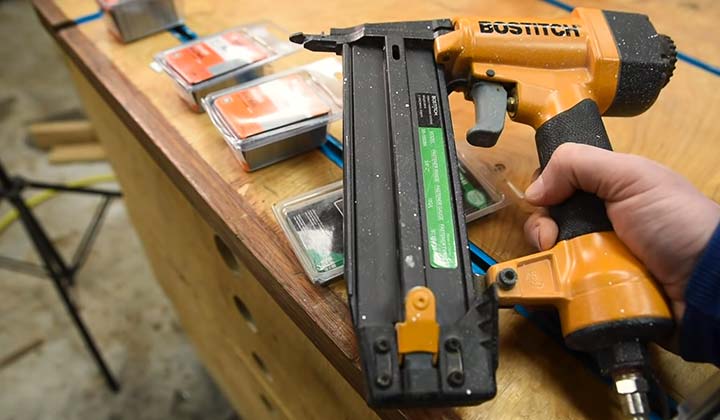
4. Palm Nailer
Palm nailers are one of the smallest members of the nailer family. They are called palm nailers as they are designed to rest in the palm of your hand.
These nailers come with straps and easy to use. You can wrap the straps around the hand so that the nailer stays stable during use.
Palm nailers have 3 kinds of variations – pneumatic palm nailer, electric palm nailer, and cordless palm nailer. The cordless palm nailers run on battery power and so you can use these nailers if there is no access to electric power.
Since the palm nailers are smaller in size you can use it in a tight place where it is difficult to use a big nailer. You can joist hanger nails, drive large framing nails, or other bulk nails of similar sizes using a palm nailer.
Since palm nailers are lightweight and smaller in size you can work for a long time without fatigue. Generally, palm nailers can drive nails between 1.5″ and 3.5″ long. Some models can drive nails between 2″ and 6″ long.
5. Siding Nailer
Sometimes people confuse the siding nailer with the roofing nailer as there is only a little difference between these two. Siding nails used in the siding nailers are one or two-inch longer than roofing nails as the siding nails need to carry more load compared to the roofing nails.
Siding nailers are used for installing siding, for example – to join thinner pieces of wood a siding nailer is used. Nail size ranges from 1-1/4″ – 2-1/2″ with wider heads are used in a siding nailer.
The siding nailers are designed to maintain the precision because it comes with the depth-of-drive adjustment feature. This depth-of-drive adjustment feature lets the user get the exact depth that they need.
It is designed to hold the siding perfectly in place. For instance, if you are working with vinyl siding you may have to face problems with the expansion of vinyl due to the effect of heat. The siding nails include a wiggle room so that the vinyl can expand and contract without cracking.
If you need to work with aluminum siding then you have to buy siding nailers that are compatible with aluminum nails. This information means that all siding nailers are not compatible with aluminum nails.
6. Pin Nailers
Pin nailers are generally used to filling the hole in finish carpentry. You can also use it for crown molding, cabinetry, delicate trim pieces, and thin veneers.
It shoots thin headless nails that look like the pin to fill holes after finishing carpentry projects like cabinets, coffee tables, and many more.
The pins are very small that they do not leave any visible holes in the finished object. Unlike other nails, you have to use glue when you are working with pin nails. These pins are also easy to pull out from the object.
7. Brad Nailers
Brad nailers are used in baseboards, crown molding, trim work including door and window casings. People sometimes get confused between a brad nailer and a finish nailer. They both are the same with a little difference. Here I would like to mention the difference between a brad nailer and a finish nailer.
The primary difference lies in the size of nails used. The brad nailers use 18-gauge nails whereas the finish nailers use 16-gauge or 15-gauge nails. An important advantage of a brad nailer is that it does not cause splitting in the object and so you do not have to use any putty.
8. Finish Nailer
Finish nailers are used for crown molding, baseboards. If you have gone through the paragraph of the brad nailers the size of the nails used in a finish nailer is already known to you.
To handle the bulkier objects a finish nailer is a good choice. Since the nails used in a finish nailer are comparatively larger they have more holding power than the brad nails.
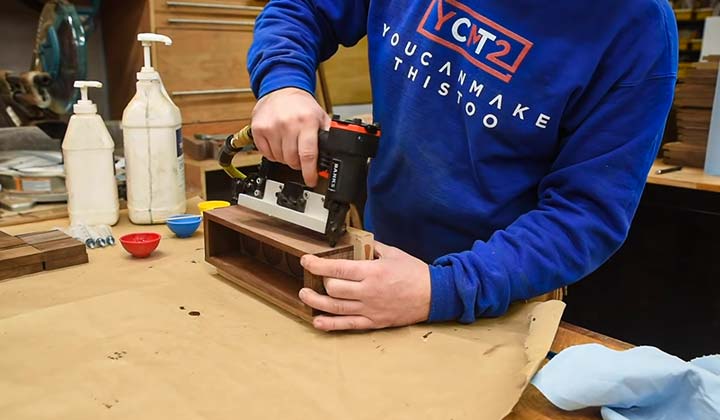
Final Thought
The nail guns replaced the hammer and nails and made the job of driving nails into different kinds of materials easier, faster, and safer. If you do not have any experience with nail guns no doubt that you will feel overwhelmed in the purchasing store.
The types I have mentioned in this article are the common types of nail guns. Each type has many sub-type and various brands. This article can be a good starting for you to gather knowledge about the use and categories of nail guns.
Once you have the basic idea about the use and types of nail guns eliminating the inappropriate nail gun and picking the suitable nail guns for your work will be easier.


